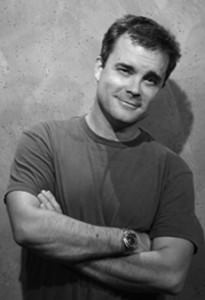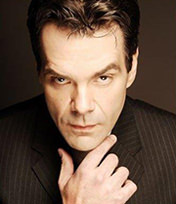
What do you think happens when ghosts “appear”? Is it actual contact, the influence of people around you, or just tricks of the mind that science and medicine can explain away?
In other words, is this stuff real or a bunch of hooey?
Molotov Theatre Group is presenting The Margins, by David Skeele, April 2 – 26, 2015 at DCAC in Adams Morgan. The 65 minute horror story takes a close look at paranormal events gone horribly wrong.
Playwright Skeele, a professor at Slippery Rock University, based his frightening supernatural play on the true story of The Philip Experiment. In Toronto in 1972, members of The Toronto Society for Psychical Research (it’s a thing!) wanted to see whether they could raise a spirit of their own imagination.
They created a character named Philip, with his own story and personality, and set about trying to create reality from their own thoughts. After months of work, they claimed success, with the documentation to prove it – or so they said. Some of their evidence can be found in rough videos of what might best be called “séances”
These were NOT crackpot ghost-chasers. The project was monitored by noted mathematician A. R. G. Owen and psychologist Dr. Joel Whitton. The test group included Margaret Sparrows, the former chairperson of MENSA in Canada. (MENSA, people, MENSA!)
Film footage of the experiment showed ghostly manifestations such as rapping on tables and table levitation. The group’s participants all swore that none of them had done anything to make these things happen.
Flash forward to The Margins. In Skeele’s play, the participants are not just paranormal fun-junkies. They have documented psychic abilities with their own skill sets, and all are under the guidance of an expert in the ways of the weird. (Kind of like the X-Men meet the Ghostbusters.)
That’s way too much psychic energy in one room. As you might expect, things go immediately from good to gnarly, and soon the group – with a hard-boiled journalist watching the action – find themselves up to their eyeballs in things they can’t explain. Nasty things. Bloody things.
Mwha-ha-ha-ha!….
That’s great subject matter for a scary play, and The Margins delivers on that score. But what was really going on in The Philip Experiment? If it wasn’t a ghost, what was it?
Neuropsychologist and author Dr. Richard Restak, in his book The Naked Brain, offers one take on a plausible scientific explanation (hang on – this is thinky stuff).

Dr. Restak details some of the work of the 19th century British inventor Michael Faraday. Like the escape artist Houdini here in the US, Faraday became fascinated with the paranormal in general and séances in particular. A common occurrence in séances of the day was “table spinning.” Séance participants would find tables at which they were seated suddenly take on minds of their own, moving without any influence by anyone near them.
Or so they thought.
Using monitors to detect motion and other scientific methods, Faraday determined that whether they thought so or not, the people witnessing table spinning were actually moving the tables themselves. They blocked out that part because they were so absorbed in getting the result.
A century later, this psychological phenomenon now has a name: The cognitive unconscious. It has to do with how the brain processes information. In short (or maybe we’re too late for that), there’s a disconnect between awareness of performing an action and the action itself. In cognitive unconscious, people can actually be doing something without feeling as though they’re doing it.
That’s the scientific explanation. Of course, there’s another interpretation that Molotov Theatre Group board member Denis Sgouros has suggested:
POSSESSION.
BOO! Mwha-ha-ha-ha!….
The Margins stars Adam R. Adkins, Jen Bevan, Yoni Gray, Kate Jeffries, Elliott Kashner, and Brian McDermott. Directed by Carl Brandt Long of Grain of Sand Theatre. Original music and sound design by Gregory Thomas Martin. Lighting by Pete Vargo. Set design by Rachel Marie Wallace.
PURCHASE TICKETS HERE
[Alex Zavistovich is the co-founder and Artistic Director of Molotov Theatre Group. He can be reached at [email protected]]







It’s the same principle behind Ouija boards. Your “cognitive unconscious” is moving your fingers to answer whatever you are asking the “spirit.” I had always imagined it as a way for your conscious and unconscious parts of your brain to talk to each other.